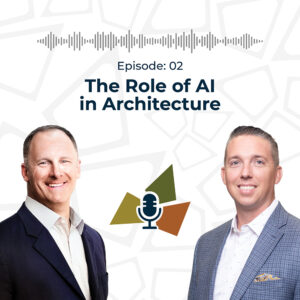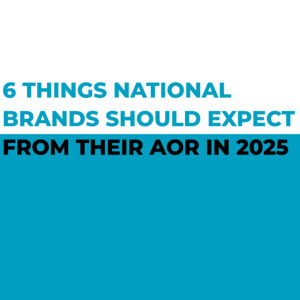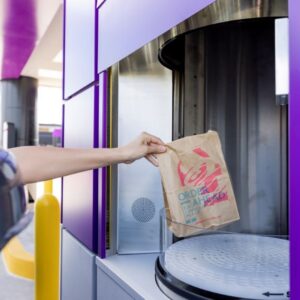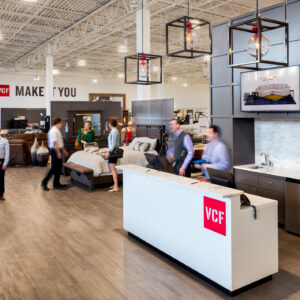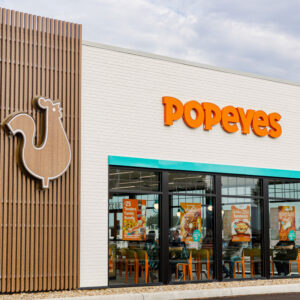Your Architect of Record (AOR) is one of your most critical long-term partners, especially when you’re rolling out projects across multiple localities. As you chart through 2025 projects and begin 2026 expansion planning, here are six attributes your AOR should be delivering—no exceptions.
1. Scalability & Speed
Your AOR should keep pace with your pipeline. This includes a refined prototype process, permitting fluency across jurisdictions, and the ability to scale documentation and coordination without slowing you down.
Things to consider:
-
- Can your AOR quickly communicate troubleshooting ideas and adapt designs for different footprints?
- Do they bring proactive permitting solutions that reduce rework issues?
- Do they have a proven ability to execute multi-state rollouts?
2. Innovation & Future-Proofing
Design isn’t static and your AOR should help you adapt. If there are new technologies to integrate, trends to explore, or environmental, social, and corporate governance (ESG) requirements to consider, your architect should bring ideas to the table, not just drawings.
Things to consider:
-
- Does your AOR act as a strategic partner or simply react to requests?
- Do they provide guidance on implementing new materials or energy systems?
- How actively do they help you adopt new tech or industry trends?
- Do they record feedback from constructors’ RFIs to adjust to material availability or constructability concerns?
3. Consistency Across Regions
Brand equity is built through consistency. Your AOR should help you strike the right balance between brand standards and local character. Customers should know exactly what to expect from your brand no matter what city they’re in, while each location feels appropriate and intentional in its surroundings. It comes down to maintaining a consistent brand experience across every site while adapting thoughtfully to local codes, cultural expectations, and site-specific constraints.
Things to consider:
-
- Does your AOR deliver uniform results across all geographies?
- How well do they balance brand standards and local nuances?
- Do they utilize a streamlined and consistent QA/QC process?
4. Value Design
A forward-thinking AOR brings cost awareness throughout the design process. It’s about designing smarter–prioritizing operational efficiency, avoiding overdesign, and eliminating unnecessary complexity or risk.
Things to consider:
-
- Does your AOR have a clear process for aligning on goals before design begins?
- Do they bring cost-conscious design solutions without sacrificing intent?
- Do they provide guidance to separate the must-haves from the nice-to-haves?
5. Sustainability Expertise
Sustainability can’t be an afterthought. Your AOR should bring environmental considerations into the conversation early and help align those goals with local code, brand initiatives, and long-term building performance.
Things to consider:
-
- Does your AOR guide design with your energy and sustainability goals in mind?
- Do they bring creative sustainable design options to help reduce long term operational costs?
- Are they fluent in evolving jurisdictional energy codes?
6. Client Experience & Alignment
Strong relationships matter. Your AOR should listen deeply, align with your goals, and be ready to plug in where you need them—whether as a lead partner or one piece of a larger program team.
Things to consider:
-
- Is your AOR proactive in solving problems and offering suggestions before you ask?
- Do they provide open and responsive communication from start to finish?
- Can they integrate quickly into your systems, teams, and timelines?
- Do they feel like a true partner—or just a vendor?
What Next?
These Questions are meant to spark reflection, conversation, and — when needed — change.
Whether you’re refining an already strong partnership or rethinking what you need from your team, the most important next step is asking the right questions:
-
- Are we scaling efficiently across markets?
- Are we getting proactive insight—or just execution?
- Are we well prepared for future growth?
- Are we solving issues as we go or revisiting the same problems often?
If these questions surfaced areas of opportunity (or uncertainty) you’re not alone. Many national brands are re-evaluating what they need from their AOR as they plan for what’s next. Download the Guide
As you work toward your long-term goals, we’d be happy to continue the conversation about what partnership could look like for your brand.
Related Articles:
